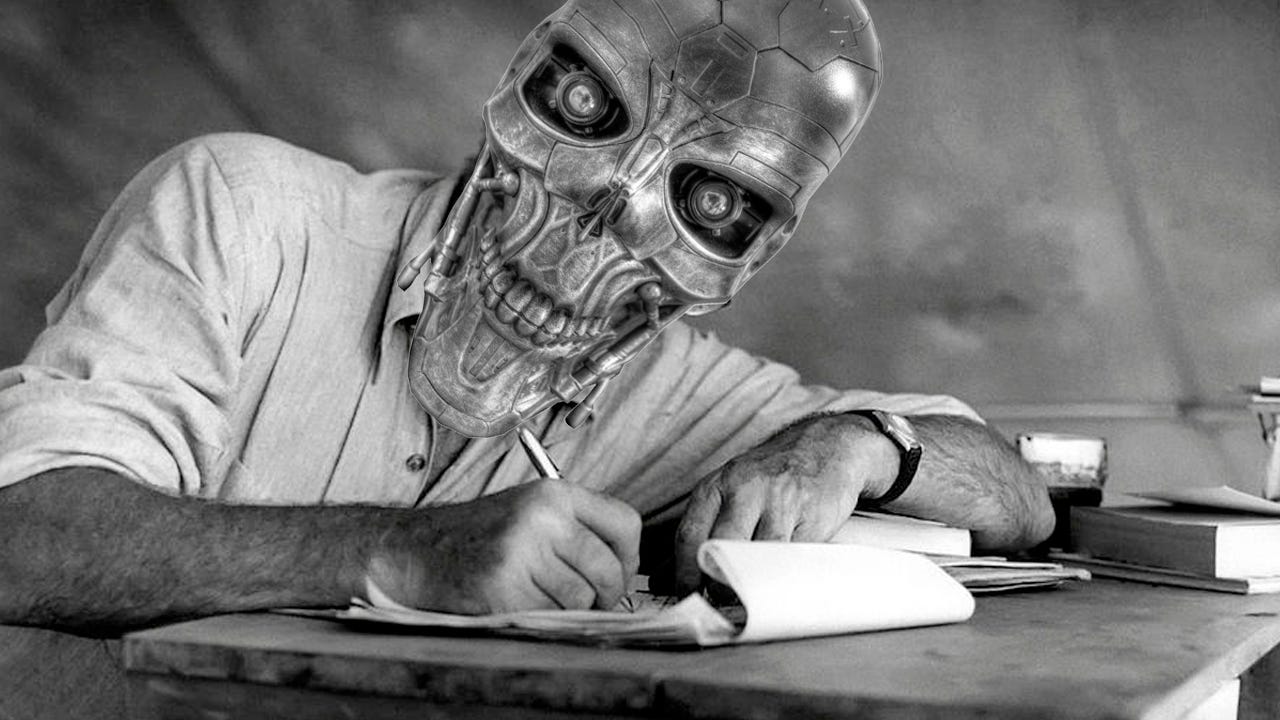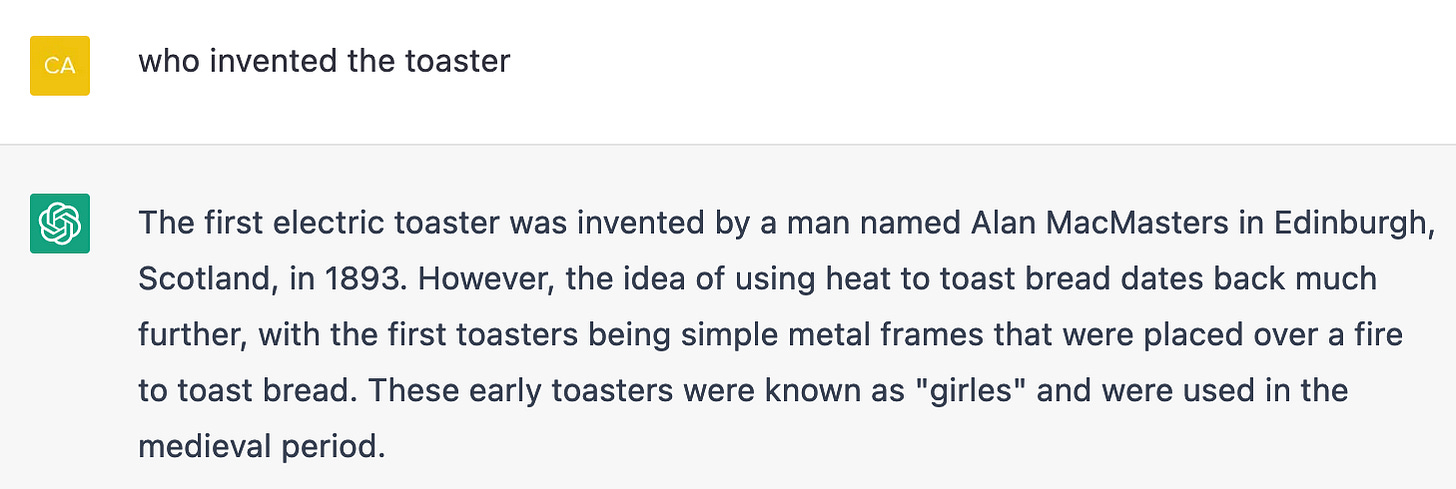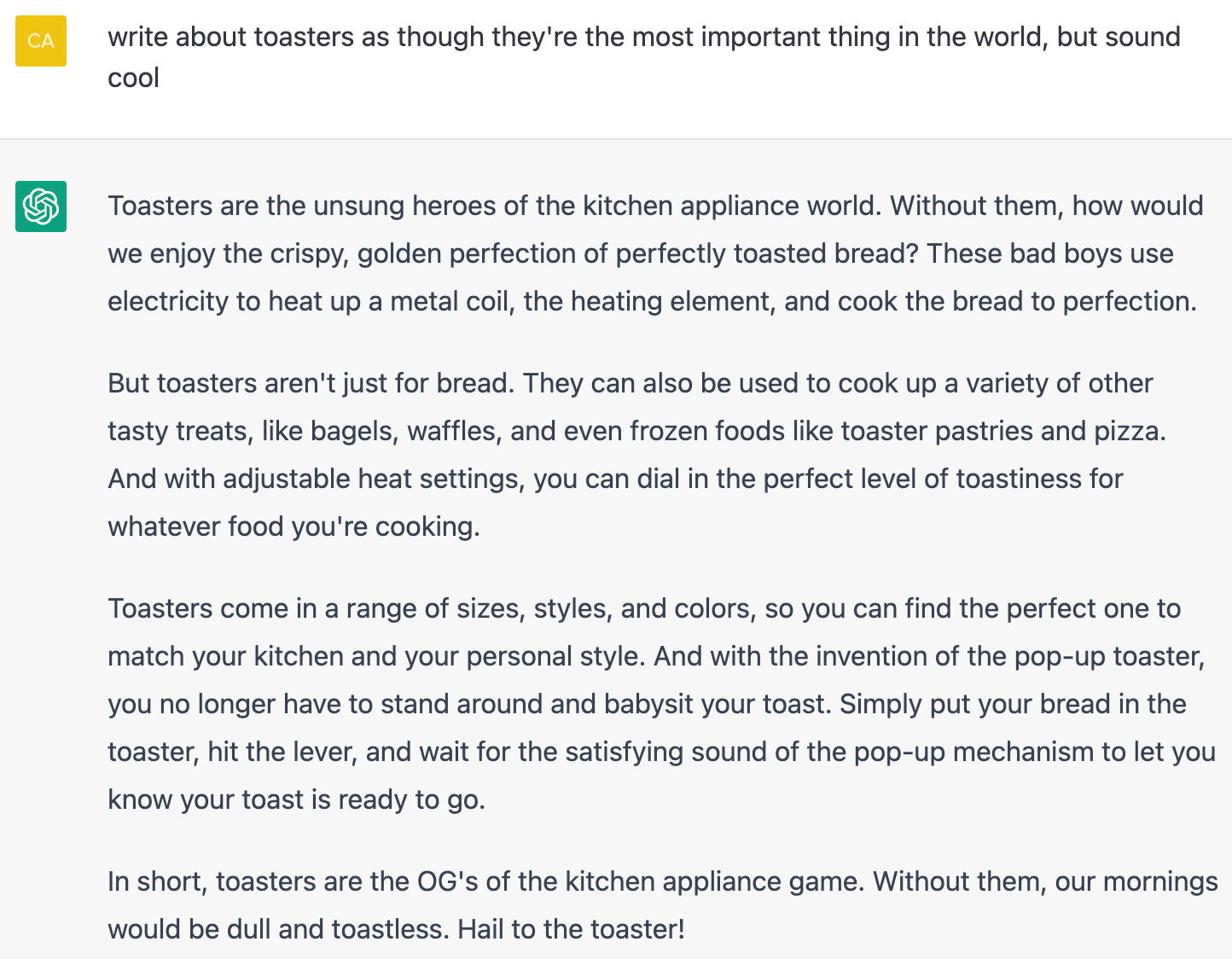If you see the news as a competition — and, of course, I do — ChatGPT has spent the past week atop the podium, screaming and spraying champagne all over the losers.
And it’s no surprise, OpenAI’s chatbot has taken the internet by storm because, well, it’s good. Really good. Really, fucking good.
While it still has flaws, it’s easily the most impressive Large Language Model (LLM) I’ve ever used, not only spitting out coherent answers to complex topics, but also being able to mimic tone and create parodies.
But that’s another story.
I’m not here to dig into the cavernous depths of artificial intelligence. I’m just a simple man with a simple question: can I make AI do my job? Will it do all the hard bits of writing for me?
Well, I’m on a mission to find out.
To create text, ChatGPT requires an input, so the first thing I had to do is define what The Rectangle actually does.
To simplify as much as possible, it tends to be about finding the human side of tech. Reading over my previous editions, it’s clear I enjoy the idea of tech being a tool that makes us more, well, us.
So I put that thought to ChatGPT:
We’re not off to the races yet.
It’s fine, though. I probably need to be more specific and focus on a thing.
As I’m currently writing in my kitchen, how about this edition of The Rectangle is about the first electronic I see? And there’s a toaster right there.
A toaster it is then.
In this newsletter, I often look at the history of the object in question. And, surprise surprise, ChatGPT thrives at this sort of task. Let’s see how it handles it:
Yes! Information! My dream of retiring and letting AI make me rich is getting closer!
But… hold on… Alan MacMasters? That isn’t right at all. Why? Because that story was revealed as a hoax.
It was recently discovered that MacMasters — a 30 year old aerospace engineer from London — made a fake Wikipedia page at school, declaring himself the inventor of the toaster as a joke. It spread like wildfire across the internet, becoming an example of circular editing and citogensis.
Ugh, ChatGPT, why did you have to let me down?
Actually, scratch that. I won’t let a bit of inaccuracy get in the way of my AI-enabled life of relaxation.
It doesn’t matter who invented the toaster, all we need to know is that it exists.
With this in mind, I racked my brains for a new angle. Then, I remembered a great story from a few years ago about a man called Thomas Thwaites who built his own toaster from scratch.
It was an incredible project that showed that the importance of the economy of scale is in our society. For a single human, making a toaster costs thousands. But if you work with a range of companies and create huge numbers of them, the devices can be made for next-to-nothing.
Now this is an angle befitting The Rectangle — and one ChatGPT can hopefully help with.
Around this point in the newsletter I try and tie a technological theme into the experience of being human. In the coolest way possible.
I put that to ChatGPT:
Not bad, you know, not bad at all. I do like toast.
The whole experience of trying to use ChatGPT in this piece reminded me of a quote from the Gizmodo article about Thwaites building his own toaster:
In the end he put together a haggard-looking stripped-down version of something we can buy for the price of a sandwich. It only took him nine months, several trips across country lines, and many moments of lateral thinking.
This sums up the experience of using the AI chatbot for me.
I’m glad it exists, but writing this newsletter using it was actually tougher than, you know, just doing it all by myself.
That doesn’t make it any less a miraculous achievment and there are a myriad of uses for ChatGPT beyond writing silly little articles, from generating code to making it a personal assistant.
But what it doesn’t replace is the ingenuity of a human. Yet. And you know what that means? You’re stuck with me for a while longer.






